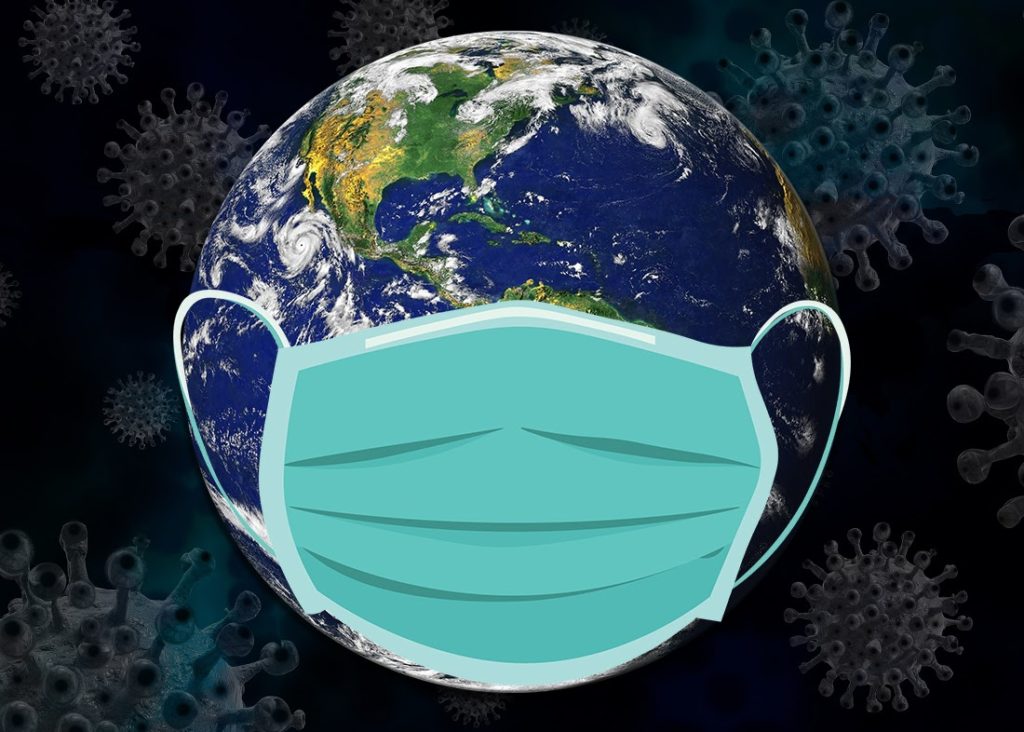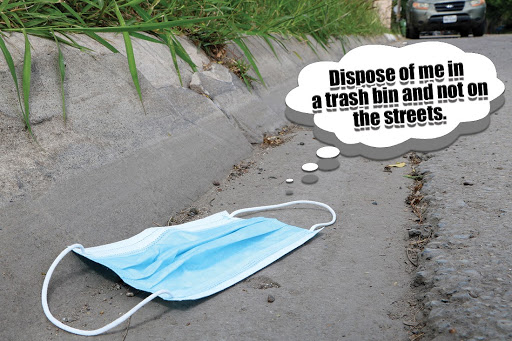
Roxanna Miranda/The Rider Photo Illustrations
Alejandra Yañez | THE RIDER
While the COVID-19 pandemic has aided in short term environmental restoration, the long term effects are dependent on humanity’s future trends, according to a UTRGV professor.
After a year of co-existing with the novel coronavirus, environmentalists discovered early on that the effects of less human travel due to the quarantine have benefited the environment in small but significant ways.
By reducing human activity, ecosystems were able to flourish and heal themselves from the damages that humans placed on their environments.
Christopher Gabler, an assistant professor at UTRGV’s School of Earth, Environmental and Marine Sciences with a joint appointment in the Department of Biology, said one of the most important impacts that COVID-19 had on the environment was reducing human activity.
“We stopped going to work as much,” Gabler said. “We stopped driving around as much. We stopped moving and traveling and that was only one of the ways it affected human behavior, but that actually has bigger implications for the environment. The reason for that is because we have so many humans, over seven billion people, and how we behave has a lot to do with [the environment].”
He said that by simply taking Zoom calls rather than traveling to job sites, humans were able to reduce greenhouse gas emissions and decrease the regular carbon dioxide rate. This increased the air quality in many major cities.
“In places [such as] India and China and other parts of Southeast Asia and everywhere in the world, the air was better,” Gabler said. “People were having fewer incidents of asthma and having less respiratory distress and things like that because the air quality in the major cities improved remarkably during the pandemic shutdown.”
He said even wildlife became more abundant.
“People are seeing mammal species and bird species that they hadn’t seen in decades because there was less human activity,” Gabler said. “Animals are showing up in city parks that people haven’t seen in a long time so that was also an important feature as well–that gave ecosystems that are usually kind of stressed due to high humans presence a bit of a break and it allowed them to move and reproduce and gather food and do that sort of thing more easily.”
He said another positive environmental factor of COVID-19 is the reduction in transmission of other diseases, such as the flu.
Gabler said while this was the short-term impact of the pandemic on the environment, the long-term impact is less clear.
For the short-term progress to show any type of long-term promise, humans must make changes in their way of life.
The human carbon impact that affects the atmosphere depends on three major things: The emissions from cars and airplanes, the food we eat and how much energy we use to maintain our home.
Gabler said that while factors such as heating and cooling homes did affect the environment in a negative way due to more people staying home, he argued that the fact that people traveled and flew less had a bigger impact on carbon emissions.
“I’m optimistic that it’s going to carry forward,” he said. “Businesses see now that we don’t need to travel so much. People can work from home more often. So, I’m optimistic that that trend will continue.”
Gabler said the short-term progress may be erased if businesses try to revert back to their old ways and double their output in an attempt to make up for lost time during the pandemic.
“Time will tell,” he said.
Consequently, some of the negative effects of the pandemic are the increase in waste, such as facial coverings and plastics from hand sanitizing and gloves.

“We are using a lot more hand sanitizer and wipes and things like that, but I think that’s far less than reducing our greenhouse gas emissions,” Gabler said.
Angie Rochas, an environmental sciences and art freshman, has researched this topic and found that the effects of the pandemic on the environment are relatively short term.
Rochas said global air pollution decreased by 6.4 % due to the pandemic.
“It’s important that we learn from this and we see the changes that we want to implement in our lives in the future,” she said. “If we go back to the way things were pre-COVID, the air pollution is going to increase a lot, and it won’t elicit the results that we’re looking for.”
Rochas said she was impressed by the way that the Earth healed itself in so little time.
“It was just a moment where we could see how easily the Earth could heal itself and become healthy again if we just took the necessary measures,” she said. “But just as easily as it can restore, it can deteriorate, you know.
“Especially if after all this COVID, we decide that we want to travel. It’s so easy to get caught up in our own struggles and our own short-term problems that we don’t see the long-term impact that it could have if we return to the way [things were] before.”
Rochas also concurred that while the environment did show that it could recuperate, the pandemic also had some negative effects on the Earth.
“Right now, we’re using a lot of plastic for deliveries, for masks, for precautions,” she said. “When you get something delivered from a fast food restaurant, they’re going to give you plastic utensils and containers made out of plastic. Not just that, but people at home are shopping a lot more online so that delivery and all that packaging, the transportation and everything is releasing toxins into the environment as well, so there was definitely an increase in those activities.”
Gabler said the way of life in America is not sustainable for the long term.
He said even if humans were to finally reduce their carbon emissions to zero, the results of climate change would still emerge because of all the damage already done, which takes time to reverse.
“By 2050, we’re going to be seeing a lot more impacts and interruptions of our way of life to severe droughts, severe storms, more disease outbreaks, greater climate stress, greater sea-level rise,” Gabler said.
He said going forward, things are going to get tougher because of the increase in population, demand for food and other factors during climate change.
“Things are, I’m afraid to say, are going to get worse before they get better,” Gabler said. “Hopefully, more people kind of wake up to this dire situation we’re in, and we make some real fundamental changes to improve the situation. ’Cause like I said right now, the improvement we’re seeing is really just a slow down of making it worse.”
Despite people’s efforts, he says a lot of the change lies in the hands of elected officials.
However, what people can do is work on making behavioral changes in their lives to reduce their ecological footprint.
“So, an ecological footprint is not just how much you fly, or drive, or how much you air condition your house and how much meat you eat,” Gabler said. “It’s also how much plastic you produce. It’s also your living situation, like do you live in high-density housing or do you live in a suburb with a yard and a single standing dwelling? Where do you get your food from?”
The second thing that people can do, apart from changing their own behavior, is help the community change by getting the word out that what they do affects the environment, Gabler said.
He said COVID-19 was a result of climate change and that the community must show urgency in trying to correct these environmental issues.
“COVID is a symptom of climate change,” Gabler said. “We were seeing more diseases spreading and outbreaks because as our climate changes, parts of the world where certain animals that are vectors of disease can live and change.
“So animals are moving to different places and taking new diseases with them, and the diseases themselves can live in that environment because they have their own ecological niches. So, a distrubed climate system helps disease spread and move around, and it is affecting us.”





